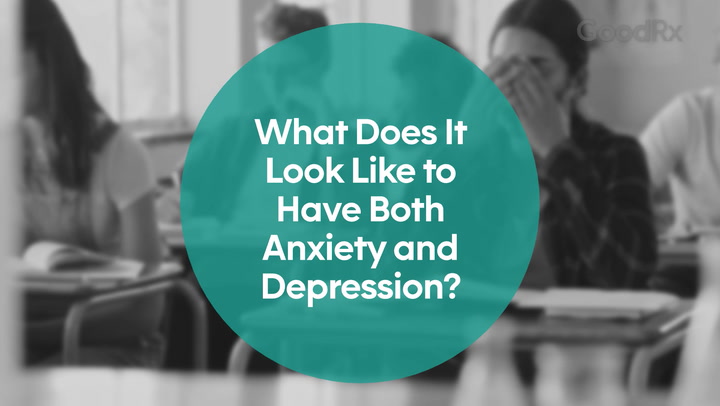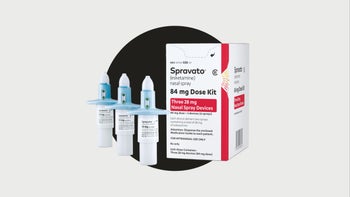
How to Take a Mental Health Leave of Absence From Work
Key takeaways:
You can take time off for your mental health if your employer is covered under the Family and Medical Leave Act (FMLA).
If FMLA doesn’t cover your workplace, you may need to find other options, like qualifying for leave under the Americans with Disabilities Act.
Warning signs that you may need time off include mental health symptoms interfering significantly with your work, worsening symptoms, or the need to participate in more treatment that would interfere with work.
Table of contents

Sometimes, it can be hard to manage a serious mental health condition and work at the same time. When you need extra time and space to attend more intensive treatment, you may want to consider taking leave from your job.
This isn’t always easy, as your employer may not be on board. It’s one thing to take time off for a physical health condition — it’s another to call in sick because you’re experiencing mental health symptoms. But both are valid reasons for staying home from work.
That’s why it’s important to know your rights about taking a mental health leave of absence.
Search and compare options
What is a mental health leave of absence?
A mental health leave of absence is when you take time off work due to a mental health condition. You may need a break to undergo treatment for severe depression or anxiety, or another mental health condition.
If your workplace is covered, the Family and Medical Leave Act (FMLA) allows an unpaid medical or mental health leave of absence of up to 12 weeks. While an FMLA leave is unpaid, it does protect your job and your health benefits. Your employer isn’t allowed to fire you during a qualified FMLA leave.
You can take leave for mental health in one of two ways:
Continuous: This is when you leave work for several weeks or months in a row.
Intermittent: This is when you take occasional time off. You might take a couple of hours to go to therapy, or you may take a day to manage a panic attack.
What are my rights under the Family and Medical Leave Act?
FMLA requires your employer to offer you the following once you become eligible:
You can take up to 12 work weeks of unpaid leave each year.
You get to keep your employee health benefits.
Your job or an identical position will be available to you when you get back.
Unfortunately, FMLA doesn’t require your employer to pay you for the time away. However, some employers contract with companies that provide some type of disability insurance pay while you’re on leave. In addition, you may be eligible for short-term disability pay from your state while on leave.
Working from home and mental health: Read about the benefits and some potential drawbacks of working remotely.
Do you have workplace stress? Here are some strategies for reducing workplace stressors.
How to find a therapist: Here’s how to find a therapist who is a good fit for you.
You may also want to use paid sick time, vacation days, and personal days instead of taking a leave, if possible.
What mental health conditions qualify under FMLA?
Mental health conditions that require inpatient care or ongoing treatment qualify for FMLA, such as:
Read more like this
Explore these related articles, suggested for readers like you.
How do I take a mental health medical leave?
There are several steps you need to take to go on leave for your mental health:
Start by talking with a healthcare professional or therapist. Ask them if they think you should take time off. And ask them for help preparing to request leave from your employer.
Look at your employer’s policy or ask your human resources department if you’re eligible for leave. If you are eligible, ask about your employer’s process for requesting a leave of absence.
Find out if your leave will be unpaid or paid so you can make financial arrangements. In some cases, you may be eligible to apply for disability benefits or use short-term disability insurance while you are on leave.
Ask a healthcare professional or therapist for documentation stating you need mental health leave. Have them include their recommended duration of leave. Be sure they include all the information your employer requires.
Talk with your work supervisor about taking leave. You usually don’t need to go into detail with your direct manager — just let them know time off will help you recover from whatever you’re going through.
Fill out and submit any paperwork your employer requires. Make sure you follow their procedures for medical leave.
Ask about procedures for when it’s time to return to work. Some employers may ask you to check in with HR or your manager when you’re getting ready to return. You may also want to plan for reasonable accommodations for when you return to help you better manage your condition.
How do I know if I should take a medical leave for my mental well-being?
Per the FMLA, you can take medical leave for serious health conditions like severe anxiety or major depression. It’s not for a casual month off to destress. Your employer will likely ask for evidence that a mental health leave is appropriate.
Ask your primary care provider or therapist if they think you should request medical leave. They can assess the severity of your symptoms and help you decide if time away from work should be part of your treatment plan. They can also help you with documentation that your employer may require.
Signs it may be time to take a leave of absence from work
These symptoms may provide clues that a mental health leave could be beneficial:
Inability to focus
Strained relationships at home and at work
Difficulty with self-care
Lack of sleep
Lack of energy
Calling in sick frequently
Loss of motivation
Overeating or undereating
Too much or too little sleep
Worrying too much
Feeling helpless or hopeless
Substance misuse
Staying away from family and friends
Physical distress like headaches or stomach pain
Can you take time off from work for mental health?
Taking time off for your mental health depends on your employer. If you just need a day or a couple of days off for a mental break, you could use paid time off (PTO), or paid or unpaid sick time.
Another option is to talk to your workplace about the importance of mental health. They might be more agreeable to mental health days if they understand the benefits to their workers.
If your workplace is covered under FMLA, and you need longer than a few days off, you can ask for leave for things like:
Attending therapy appointments
Getting inpatient psychiatric care
Taking care of a loved one with depression or another mental health condition
Things get trickier if your job isn’t covered under FMLA or if you haven’t been employed long enough (1 year) to be eligible for coverage. You can ask for time off, but your employer doesn’t have to give it to you.
If that’s the case, you could look into other options. Some states have their own guidelines for family leave. Or you could see if you qualify for time off under the Americans with Disabilities Act (ADA). The ADA covers people who have debilitating mental health conditions.
Frequently asked questions
Burnout isn’t everyday stress. The World Health Organization (WHO) describes it as a syndrome caused by chronic workplace stress. It can cause feelings of exhaustion and other mental health symptoms. If it causes enough distress that you cannot carry out your work responsibilities, it may be covered under FMLA.
If you’re taking a day off for your mental health, you may not need a note from a healthcare professional. Depending on your employer, a mental health day would fall under PTO or sick days.
The bottom line
Struggling with mental health issues like anxiety or depression can make it hard to focus or feel motivated on the job. If your symptoms are making it difficult to focus on work or you need extended time off to participate in treatment, it may be time to consider taking a mental health leave. If your employer is covered by FMLA, you can take an unpaid leave of absence to care for yourself. If your workplace isn’t covered, you can look for other ways, like qualifying for ADA or using your PTO benefits.
Why trust our experts?



References
Health Action Alliance. (2023). Workplace mental health playbook 2.0.
Substance Abuse and Mental Health Services Administration. (2024). Warning signs and risk factors for emotional distress.
U.S. Department of Labor. (n.d.). Accommodations for employees with mental health conditions.
U.S. Department of Labor. (n.d.). FMLA frequently asked questions.
U.S. Department of Labor. (n.d.). Mental health and FMLA.
U.S. Department of Labor. (n.d.). Paid leave.
U.S. Department of Labor. (2022). Fact sheet #280: Mental health conditions and FMLA.
U.S. Equal Employment Opportunity Commission. (n.d.). Depression, PTSD, and other mental health conditions in the workplace: Your legal rights.
World Health Organization. (2019). Burn-out an “occupational phenomenon”: International classification of diseases.
For additional resources or to connect with mental health services in your area, call SAMHSA’s National Helpline at 1-800-662-4357. For immediate assistance, call the National Suicide Prevention Lifeline at 988, or text HOME to 741-741 to reach the Crisis Text Line.





























